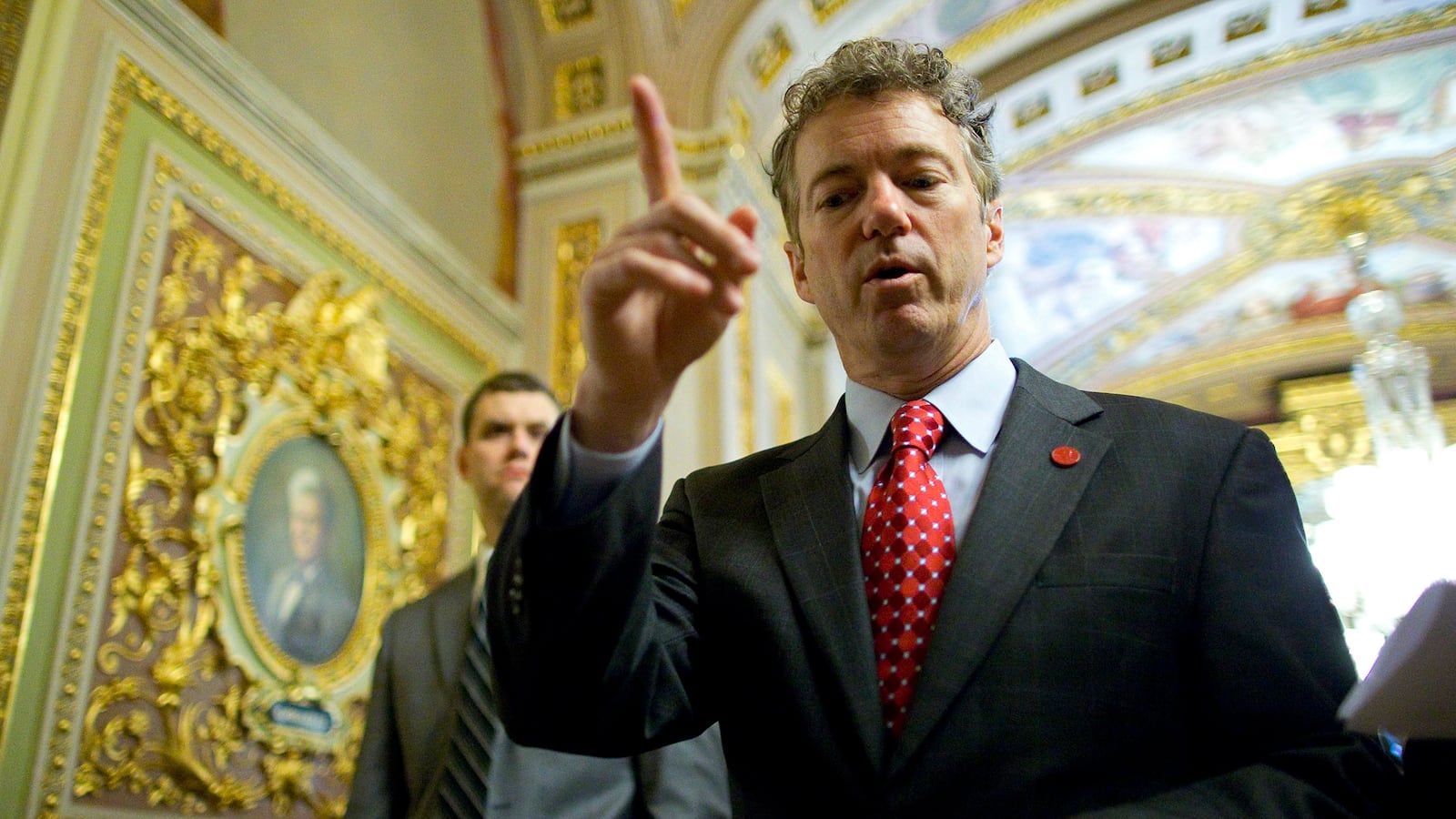Sure, projecting a winner in a presidential election a couple of years in advance is a mug’s game. But don’t you know that Hillary Clinton has already won the 2016 contest? It’s just like 2008 all over again: Hillary can’t lose.
Seriously, though, it’s obvious Hillary will win, especially when you look at the way she’s currently trouncing leading Republicans such as Chris Christie and Rand Paul among young voters. The kids love Hillary, goes this line of thinking, and since they decided the 2012 election and will only ever vote Democratic, all we need to do now is reanimate Aretha Franklin, the Eagles, or one of her other mummified favorite performers for the inauguration.
But such triumphalism about Clinton and the Democratic stranglehold on younger voters is premature, to say the least. While there’s no question that the GOP has managed to alienate millennials, there’s every reason to believe that top Democrats are doing just about everything they can to squander their currently commanding advantage.
Over at FiveThirtyEight, Harry Enten averages a bunch of polls taken earlier this year and finds that the former first lady, senator, and secretary of state rolls over Christie on average by 10 points with all voters and a whopping 27 points with “young voters” (ages 18 to 29 or 34, depending on the poll).
For Paul, the shellacking is even worse, with Clinton beating him by 11 points overall and by 28 points with the kids. Enten argues that even though 45 percent of Americans have no idea who Rand Paul is, “it’s not entirely clear Paul’s numbers will drastically improve if young voters learn more about his positions.” Paul and the kids may be on the same side when it comes to pot legalization, privacy, and war, but they seem to be at loggerheads when it comes to immigration, health care, and a host of other issues.
Apart from trying to look two years into the future—where was Barack Obama in 2006? or Bill Clinton in 1990?—the case against Rand Paul is largely irrelevant to Hillary Clinton’s and the Democrats’ own burgeoning youth problem. Thanks to truly epic Republican awfulness on just about every possible issue from gay marriage to foreign affairs to budget-busting, the Dems have indeed been able to take the kids for granted in recent years. But that hasn’t always been the case. Indeed, Republicans as different as Richard Nixon, Ronald Reagan, and George H.W. Bush all managed to win the youth vote. And consider that in 2000, George W. Bush and Al Gore split the 18-29 year old vote, each pulling 48 percent.
Two wars and The Patriot Act later, John Kerry won 54 percent of the youth vote in 2004. In 2008, Barack Obama snagged a whopping 66 percent of it, with John McCain pulling just 32 percent. Then things get interesting, though. In 2012, Obama pulled a relatively weak 60 percent of the 18-29 vote, with Mitt Romney bucking up to 36 percent. And Obama actually lost the youth vote among 18-, 19-, and 20-year-olds to Mitt Romney, everyone’s least favorite grandparent. According to George Washington University political scientist John Sides, Romney took 57 percent of 18-year-olds, 59 percent of 19-year-olds, and 54 percent of 20-year-olds. It’s not clear how those kids will vote (or if they’ll vote) in 2016, but there’s no reason to buy into the idea that the youth vote is locked up by the Democrats.
The Dems do need the youth vote. As Pew has pointed out, despite some slippage, young people overall still provided the generous cushion by which Obama beat Romney. Romney, like McCain before him, actually won voters 30 and over. In some important ways, then, the battle for the presidency may well be the battle for younger voters.
If Obama has lost support among younger voters, it seems likely that Clinton will also struggle to maintain a connection with them as a presidential campaign gets underway. To the extent she is a known quantity to younger voters, it’s as Obama’s secretary of state—the face of a foreign policy that is simultaneously a self-evident failure and one that simply wasn’t bellicose enough for Clinton’s tastes.
Either way, that’s no way to win the youth vote; neither is her generally uncritical support of a national-security state and her use of Edward Snowden as a “punching bag.” Assuming that the GOP nominee is someone around the ages of Christie or Paul, she’ll also be about 15 years older than her opponent, which flips the age-party relationship of the past two elections as well. And the Democrats’ problems only get bigger if Clinton doesn’t run: They’ve got virtually no other obvious ready-to-go candidates in the wings.
On top of that, there’s still two more years of Obama to suffer through. As pollster John Zogby has written, the president has already alienated many young voters for a number of reasons. “First and foremost,” he writes in Forbes, “is their deep distrust for all political authority and their disappointment in Mr. Obama himself. Second is the sense of a deep invasion of privacy and government overreach in their lives. And third is the Millennial style of wanting immediate answers to problems instead of bureaucratic stasis, as they see it.”
If the economy stays flat or especially rough for younger Americans, or if we’re plunged back into aimless wars without end, all that will make things tougher still for any Democrat in 2016 to easily win the youth vote. Especially if she is facing a youthful Republican who is OK with pot legalization and gay marriage, pro-privacy, anti-war, and seems to have a clue on economic policy.
There’s no question that the Republican Party brand is all but dead to younger voters. As the recent Reason-Rupe poll on millennials found, just 23 percent of voters between the ages of 18 and 29 identify as Republican or lean Republican. Millennials are social liberals who favor gay marriage and pot legalization; if the GOP can’t come to terms with that, its future is indeed limited.
The corresponding youth-identification number for Democrats is 43 percent, which sounds good until you realize that it’s still lower than the percentage of voters 30 years and old who identify as or lean Democratic (49 percent). Indeed, fully 34 percent of millennials identify as independent, compared to just 11 percent of older voters. Young voters are already not willing to vote Republican. In a few years, and absent a vibrant candidate who speaks to their concerns, they may well decide not to vote Democratic, either.
Indeed, the great political achievement of the 21st century so far has been to alienate young voters from the two major parties in the U.S. And the great task for both Democrats and Republicans in 2016 will be to figure out how to woo them back.






